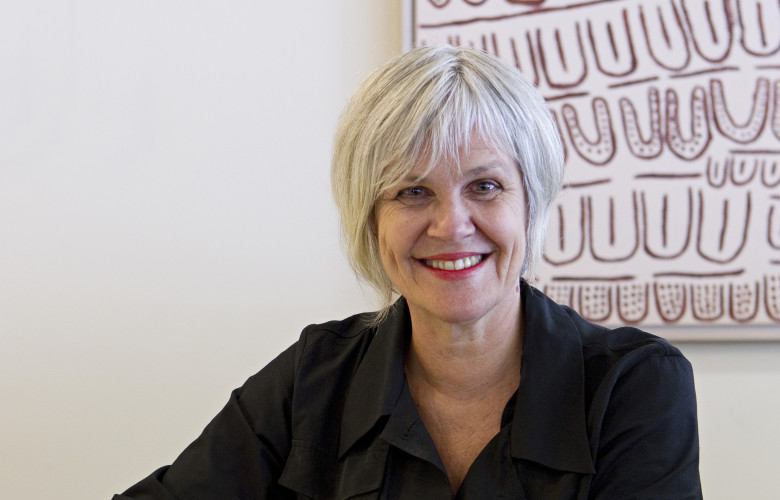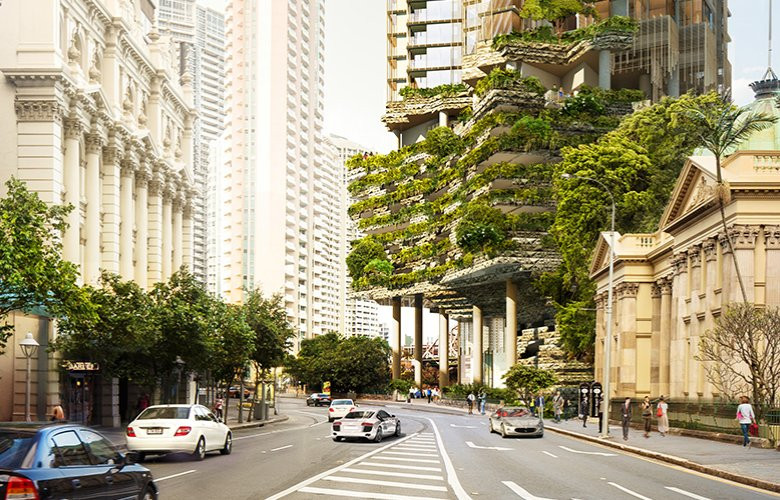Get to know architect Elizabeth Watson Brown, design director with Architectus
Contact
Get to know architect Elizabeth Watson Brown, design director with Architectus
Elizabeth Watson Brown came to the 'slow art' of architecture through a love of ancient history, archaeology, anthropology, and art, and is fascinated by the process of transforming ideas into inhabitable places. She was a key collaborator on the design for the major new Brisbane development, 443 Queen Street.
Elizabeth Watson Brown told SCHWARTZWILLIAMS she is fortunate to live in Brisbane, and said it's important to create 'breathing' buildings that are suitable for the city's unique climate and landscape. She said the architecture industry is now a better place for women to work, with more role models leading the way.
How did you first decide to become an architect?
I was always interested in ancient history, archaeology, anthropology, art and architecture, so the infrastructure and evidence of culture really. Architecture was the best choice of those ‘A’ interests as I love ‘doing’ rather than only researching and knowing.
What do you enjoy most about your job?
It’s certainly the making of architecture which has been truly rewarding and fascinating for me. Although it’s a ‘slow art’ compared to other creative endeavours, after all these years I still truly enjoy that process of ‘idea to inhabitable place’.
I still get an enormous thrill walking into spaces that started as an idea, and through the intense process of the realisation of architecture (the slowest of the arts!), became an inhabitable place. That’s powerful!
Is architecture a good profession for women?
It should be. And happily there are many more women architects now: 50 per cent of graduates, coming from a very low base of less than 5 per cent when I graduated nearly four decades ago. Then we really had almost no role models in practice.
I think women are changing and influencing the profession in many positive ways, and the professional world will be a far better place for women, and for all, because of that.
The signs are that it will be a far more just world for my granddaughter’s generation, with opportunities that will not even need to be negotiated and discussed as they were last century.
You have worked on the 443 Queen Street development which is described a ‘sub-tropical’ building. Can you tell us briefly about some of the design elements that adapt the building to its climate?
I am a design collaborator on the project. It has been a very rewarding 50/50 collaboration with Richard Hassell of WOHA.
The design is truly a Brisbane place in that it is directly inspired by this place. We have a remarkable subtropical climate in Brisbane, which, with good design, allows us to enjoy it year round and to minimise energy use.
The design supports and enhances our way of life in the subtropical city, offering the ability to live in the city centre in the way we enjoy, and in a way that capitalises on the qualities and climate of Brisbane, and our open, welcoming, more casual way of life.
The design is ‘green’ visually in regard to the generous, integrated, habitable sub-tropical landscape throughout; designed as abstractions of familiar and lost Brisbane landscapes. It is also ‘green’ environmentally, minimising energy use through passive design principles with natural cross ventilation to apartments, naturally ventilated public spaces, low energy services, and capture and re-use of water.
443 Queen Street is generous and open at both urban and residence scale. The design gives back to the city with a generous public domain linking city to river. Important city and river views and vistas are created, framed and enhanced. The addition of this great public space augments the street and riverside life of the precinct, and the Customs House and 480 Queen Street by linking those spaces and attracting new activity to this important place in the city.
Over the course of your career, is there one building design you have worked on that is particularly important for you?
At its best, architecture embodies our shared aspirations and a positive vision of the future. My career has been quite long now. It’s all been a process of understanding where we are, and designing places that truly respond to that, so every project has been part of that same journey. Hopefully the discoveries from each one inform the next one. They are all important in that way.
The buildings we make become the infrastructure of the lives we share. At whatever scale, they use energy and make a big impact, so we need to be careful and responsible.
Are there any elements of the architecture industry that you would change?
Yes indeed! The whole mad process of the enormous and so often wasted amount of time and human capital that goes into the competitive bidding process! This sets up an unhealthy bidding war culture which is capitalised upon to get ‘bargain basement’ fee structures and unsustainable build costs. It affects all across the industry, not just architects. I really feel for contractors and sub contractors in this environment. This very rarely result in the best architectural or cultural outcomes.
Some of us have tried to side step this with partnering arrangements and ECI and such but we have a long way to go. There needs to be systemic change to competition and purchasing policy.
Where do you live now, and where would you live if you could live anywhere in the world?
I live in Brisbane. It is a wonderful and quite probably mysterious and misunderstood place to some. We are very fortunate to be in a burgeoning city in a very good place in its history and future, as there is a developing understanding of the qualities and opportunities here especially if we truly understand the climate and landscape and design knowledgeably, responsively and responsibly for that.
For example, the notion of Breathing Architecture, passive environmental design and the intense relationship with and integration of living landscape is the culmination of much, much thought and collective endeavour by our profession over the years, and it is heartening to see it now embedded in policy like the Brisbane City Council’s ‘Buildings that Breathe’ initiative.
The good design of our cities, where most of us live and where most energy is consumed, is critical to our very survival. To understand our city as a living organism, as a biophilic continuum, is the way of the future and here in Brisbane we have a perfect context in which to do that. I’m excited by that and feel privileged to be here.
Read other 'get to know' profiles about architects and designers:
Get to know Seada Linardi, founder of SLAB Architecture







